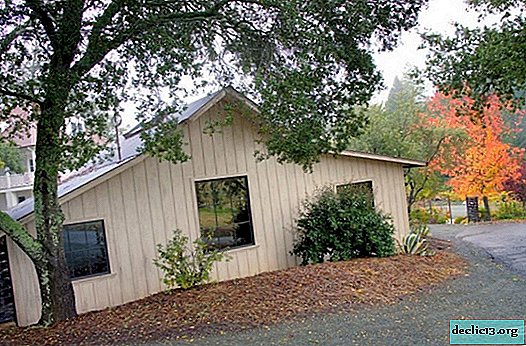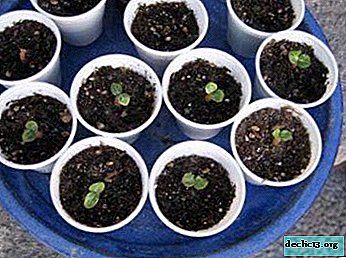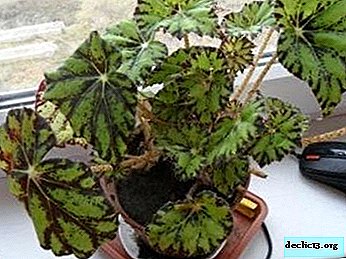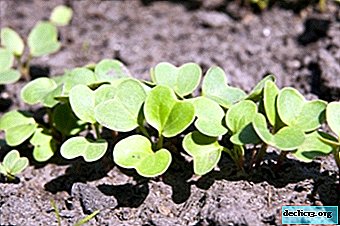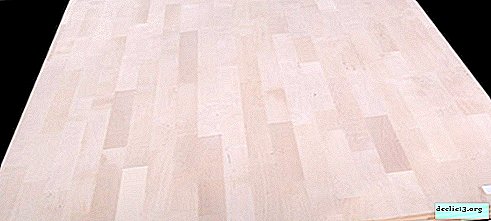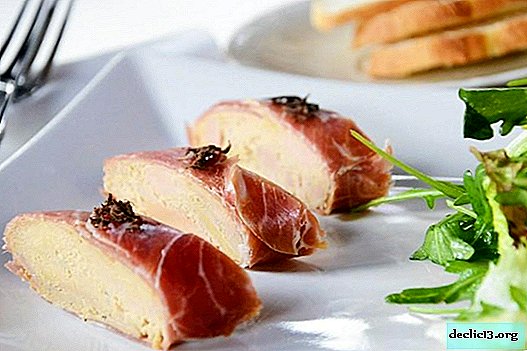Bright and unusual Decembrist - a flower that pleases the eye. Types, description and photo
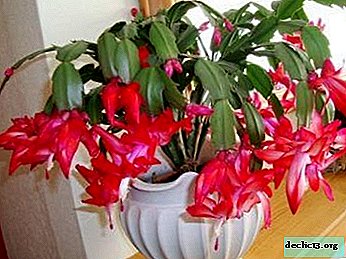 Indoor plants are the best decoration of the house. It gives the room liveliness, novelty and comfort. But the classic options with ficuses and cacti do not appeal to all connoisseurs of home flora. In case you need something amazing, exotic, original and pleasing to the eye, then the plant described below will help to resolve this issue.
Indoor plants are the best decoration of the house. It gives the room liveliness, novelty and comfort. But the classic options with ficuses and cacti do not appeal to all connoisseurs of home flora. In case you need something amazing, exotic, original and pleasing to the eye, then the plant described below will help to resolve this issue.
In this article, you will learn all about the features of this plant and see a photo of flowering Schlumbergera. Also watch a helpful video on the topic.
General description
What is called scientifically?
Schlumbergera or Latin Schlumbergera is a representative of the genus of epiphytic tropical forest cactigrowing in southeast Brazil. This plant got its articulatively difficult name in 1858 from Charles Lemer, a French botanist and writer. He gave the name to this marvelous plant in honor of the French collector of succulents Frederic Schlumberger.
In addition, this plant has broad synonymy.
 The name Zygocactus (Latin Zygocactus), given by Karl Schumann, a German botanist, is often found.
The name Zygocactus (Latin Zygocactus), given by Karl Schumann, a German botanist, is often found.- German botanist and gardener Alvin Berger called Schlumberger Epiphyllanthus.
- The German zoologist, botanist and doctor Ludwig Pfeiffer called this succulent "Epiphyllum", however, it is worth noting that Adrian Hauworth, an English botanist, also called him a quarter of a century earlier.
- The Czech botanist and ethnographer Alberto Fritsch, together with Kurt Kreuzinger, a German botanist, called this natural wonder “Zygocereus”.
In addition to Zygocactus and others, Schlumberger has various less scientific names. They were given in connection with periods of flowering plants. The fact is that it blooms in November, December and January. Hence the nicknames: “Decembrist or Decembrine”, “Christmas” and even “Christmas cactus”. Also, based on visual similarity, this plant is called a "crab cactus." Yes, in such a seemingly unfavorable period, Schlumberger blooms and smells.
Botanical characteristics
According to the scientific classification, Schlumberger belongs to:
- Domain: eukaryote.
- Kingdom: plants.
- Department: flowering.
- Class: dicotyledonous.
- In order: caryophyllan.
- Order: Carnation.
- To the family and subfamily: cactus.
- Tribe: ripsalis.
- Genus: Schlumberger.
What does Schlumberger look like?
The Schlumberger genus is represented by actively branching shrubs. This forest tropical cactus grows to 32-40 centimeters in height. The shoot is represented by a chain of segments 4-7 centimeters long, hanging from the root to the ground. These segments are green, of dense structure, without spines, but with hooks along the edges and hairs on the surface.
ATTENTION: The shoots are crowned by a zygomorphic inflorescence with a pronounced tube. Flower petals can be white, pink, yellow, orange, pale purple or red. The remaining external characteristics are individual for different species.Photo
It looks like a flowering houseplant with the scientific name Schlumbergera in the photo.




Homeland of Zygocactus
Discovered by Schlumberger was in the Southeast rainforests of Brazil, coastal areas and rocky areas. All zones of growth of this succulent are distinguished by high humidity. Also, specimens were found in the areas of Rio de Janeiro or São Paulo at elevations from 900 to 2800 meters. Schlumbergera grew on the root system of trees, crevices of stones, or even on branches, and its shoots drooped like vines.
Schlumberger was introduced to Europe in 1816 by Allan Cunningham, a botanist from England. And since 1818, the plant was already actively cultivated. In 1852, hybrids were massively bred using these succulents. And by 1860, in the application and use there was already a sufficient number of varieties in the public domain.
At present Decembrist is a fairly common and unpretentious culture in home growing. It is popular both in greenhouses and gardens of collectors, and in the private use of connoisseurs.
Is it poisonous or not?
We can definitely say that Schlumberger is not a poisonous plant. But giving it to a pet is not worth it. Due to the structure and properties of the shoot segments, they become unsuitable for cleansing the stomach of animals and vitamins, important for pets, they do not contain at all. People are also not recommended to use this plant. Is it possible to poison it with leaves? Christmas will not cause serious harm to health, but stomach problems are inevitable due to such a lunch.
Types and colors of cactus
The species diversity of the Schlumberger genus ranges from 6 to 9 plant species. Here are the most popular types:
Russelliana

The first largest species. It was discovered by Nathaniel Britt and Joseph Rose, American botanists.
Truncata

The second largest variety. Truncated Schlumbergera - discovered by Julius Schumann. With a length of 5 cm and a width of 3 centimeters, the segments at the top are truncated and have traditional hooks on the sides. The length of the flowers reaches 7-8 centimeters. The ovaries are pin-shaped. The fruits are smooth.
Buckleyi

Schlumberger Buckley is a species bred by Thomas Moore, a British gardener, by crossing Schlumbergera truncata and Schlumbergera russelliana.
Opuntioides

Schlumbergera Opuntia - widespread among home gardeners. The plant is in danger of extinction.
Exotica

Schlumbergera Exotic - a species developed by Wilhelm Bartlott and Werner Rau, German gardening botanists.
Kautskyi

Klautsky Schlumberger or Schlumberger white.
Microsphaerica

Epiphytic cactus. View discovered by Karl Schumann, a German biologist.
Orssichiana

View opened by McMillan and Bartolott.
Reginae

Schlumbergera Yellow - the result of a mixture of species Schlumbergera orssichiana and Schlumbergera truncata.
What is a similar houseplant called?
Another succulent that looks similar to Schlumberger is called Ripsalidopsis.. This plant belongs to the same family as the Decembrist. Ripsalidopsis shoots also consist of green dense segments and it blooms in a similar way. Based on this, at first glance you can confuse these plants.
Watch the video about the differences between ripsalidopsis and Schlumbergera:
How does the Christmas tree bloom?
Schlumberger blooms once a year, from November to February. In ideal conditions, it can bloom for Christmas. This phenomenon explains one of its unscientific names.
At home, for flowering, Rozhdestvensky needs stable lighting, but no more than 8 hours a day, the air temperature is 12 - 15 0C is above zero. You cannot move a blooming Christmas tree. Schlumberger blooms for one - one and a half months, and the inflorescence lasts 2-3 days.
In nature, the behavior of Schlumberger is no different. Zigocactus lives in one place and does not have the ability to moveand moderate lighting, humidity and low temperature provides shade of tropical forests or a rocky base. Find out all the details about when and how Schlumberger blossoms in this article.
How to grow at home?
Schlumbergera is an unusual representative of succulents. She prefers high humidity and moderate lighting. Therefore, a shaded eastern window, spraying and intensive watering are quite suitable for it. The temperature of the contents can range from 15 to 25 0FROM.
In summer, the plant is very useful for fresh air and plentiful spraying.. The plant does not require abundant dressing, but it can be carried out in the vegetative period, starting in March, once every 2 months with mineral fertilizers. It is best to propagate Schlumberger in segments into a pre-prepared substrate. Read more about growing this plant at home here.
About problems
 A fairly important problem is the lack of flowering in the Decembrist. This is due to non-compliance with the rules for caring for the plant and the wrong temperature balance. Also, do not forget about the rest period of the Rozhdestvennik, which comes after he has flowered. Abundant watering or fertilizer during dormancy can greatly damage the plant.
A fairly important problem is the lack of flowering in the Decembrist. This is due to non-compliance with the rules for caring for the plant and the wrong temperature balance. Also, do not forget about the rest period of the Rozhdestvennik, which comes after he has flowered. Abundant watering or fertilizer during dormancy can greatly damage the plant.
In addition, it is extremely important to observe high humidity and the correct light regime. Drafts, dryness and temperature changes are extremely detrimental to indoor Zygocactus. Segments can weaken, turn yellow, fall off and look unpresentable due to impaired plant care. We wrote about this in a separate article.
TIP: If all the rules are followed, but the plant does not recover, you can try changing the soil.Diseases and Pests
- Spider mite. A spider mite can become a significant problem. The presence of this pest is manifested in the loss of leaves and the deterioration of the appearance of the plant. It should be fought with traditional methods of treatment for harmful insects.
- Powdery worm. Powdery worm can harm your Decembrist. Its presence is manifested by white coating on the surface of the plant. If it is detected, it is necessary to apply insecticides.
- Shield. Due to the attack of the scale, the leaves of the Christmas tree turn yellow and fade, this is an extremely dangerous disease. You can get rid of scabies by wiping the surface of the plant with a cotton pad dipped in a special solution.
In more detail about the diseases and pests of the Decembrist, we talked in a separate material.
Watch the video about the pests of the Decembrist (Schlumberger):
Conclusion
Schlumbergera is an unusual cactus. He loves moderate heat and moisture. He is exotic in appearance and in care. But if you make enough effort to grow this beautiful succulent, it can decorate your land for up to 15-20 years in a row. Zigocactus will accompany a bright part of your life with its bright flowering and unusual appearance.

 The name Zygocactus (Latin Zygocactus), given by Karl Schumann, a German botanist, is often found.
The name Zygocactus (Latin Zygocactus), given by Karl Schumann, a German botanist, is often found.

